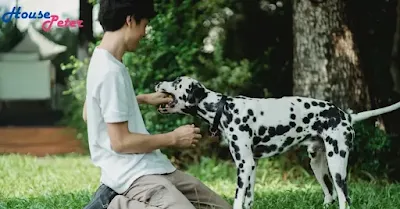Best dog training shock collar
In today's world, owning a well-behaved and obedient dog is more than just a luxury – it's a necessity. However, training your furry companion can often be a challenging and time-consuming task. This is where the best dog training shock collars come into play, offering an effective and efficient solution to help you achieve remarkable results in no time.
In this article, we will delve into the world of dog training shock collars, exploring their role in shaping your dog's behavior and providing you with invaluable insights on how to choose the right one for your canine companion. We will guide you through the step-by-step process of setting up and using these collars effectively, ensuring that both you and your furry friend have a positive experience throughout the training journey. So get ready to embark on an adventure that promises not only well-behaved dogs but also strengthened bonds between pets and their owners.
The Importance of Effective Dog Training
Dog training is not just a luxury or optional activity; it is an essential aspect of responsible pet ownership. Effective dog training goes beyond teaching your furry friend basic commands; it forms the foundation for a harmonious and fulfilling relationship between you and your canine companion.
Investing time and effort into proper dog training ensures that your beloved pet becomes a well-behaved, balanced, and socially confident member of society. It allows them to navigate the world with ease, adapt to various environments, and interact positively with other dogs, animals, and people.
Understanding the Role of Shock Collars
When it comes to dog training, shock collars have emerged as a controversial tool. Understanding their role is crucial for responsible dog owners. Shock collars are designed to deliver a mild electric stimulation, often referred to as a "static shock," to the dog's neck when used correctly. This prompt, although surprising, serves as an attention-getter and allows for immediate correction during training sessions.
Contrary to popular misconceptions, shock collars should never be seen as instruments of punishment but rather as aids in communication between humans and dogs. They provide an effective means of reinforcing commands and boundaries in a manner that is both efficient and humane. By associating the sensation with specific behaviors or commands consistently over time, dogs can quickly learn what is expected of them and respond accordingly.
Choosing the Right Dog Training Shock Collar
When it comes to selecting the perfect dog training shock collar, it is crucial to consider certain factors that align with your dog's specific needs. Firstly, assess your dog's size and breed. Smaller dogs require collars with lower intensity levels, while larger breeds may benefit from more robust options. Additionally, examine the collar's range and ensure it matches your training requirements.
Another essential consideration is the collar's features and functionality. Look for collars that offer multiple training modes such as vibration or beep options alongside the shock feature. This versatility allows you to tailor the training experience to your dog's temperament and individual responses. Opt for a collar with adjustable intensity levels, ensuring you can find the appropriate level of correction without causing any discomfort.
Setting Up Your Dog Training Shock Collar
Now that you have chosen the perfect dog training shock collar for your furry friend, it is crucial to set it up properly to ensure its effectiveness. Begin by familiarizing yourself with the collar's components and features, carefully reading through the manufacturer's instructions. Typically, shock collars consist of a receiver unit, a transmitter remote, and adjustable settings for different levels of stimulation.
Once you have a good understanding of how the collar functions, fit it snugly but comfortably around your dog's neck. Make sure there is enough room for two fingers to fit between the collar and your pup's skin to prevent any discomfort or chafing. Remember that proper fit is essential for both safety and effective training outcomes.
Creating Positive Associations with the Collar
To ensure a successful training experience for your canine companion, it is essential to create positive associations with the dog training shock collar. By doing so, you will establish a foundation of trust and cooperation, allowing your dog to view the collar as a tool that brings rewards and guidance rather than fear or discomfort.
Begin by introducing the collar gradually, associating it with pleasant experiences such as playtime or treats. Show your dog that wearing the collar leads to enjoyable activities, reinforcing positive emotions. Use gentle praise and rewards whenever you put on or remove the collar, making it a part of their routine without causing any stress or unease.
Step-by-Step Training Process
When it comes to training your dog using a shock collar, it is crucial to follow a systematic and compassionate approach that fosters learning and trust. The step-by-step training process outlined below will help you achieve remarkable results:
1. Introduction to the Collar: Start by introducing your dog to the shock collar in a calm and positive environment. Allow them to sniff and investigate it while offering treats or praise for their curiosity.
2. Conditioning Phase: Begin by associating the collar with positive experiences. Take your dog on short walks, reward good behaviour with treats, and use verbal cues such as "good boy" or "good girl." Gradually introduce the concept of mild stimulation through gentle vibrations or tones.
3. Establishing Commands: Teach basic commands like sit, stay, come, and heel using the shock collar as a reinforcement tool. Use verbal commands paired with appropriate collar stimulation levels based on your dog's response threshold.
4. Consistency is Key: Ensure consistency in your training sessions by setting aside dedicated time each day for practice. Keep sessions short but frequent, focusing on reinforcing desired behaviors while gently discouraging unwanted ones.
This step-by-step process ensures that you gradually build upon each stage of training, promoting a healthy learning environment for your furry companion. Remember to always maintain patience and empathy throughout the process, celebrating even small victories along the way!
Refining Your Training Techniques
Once you have established a firm foundation with your dog training shock collar, it's time to fine-tune your techniques and ensure that the training process is effective and enjoyable for both you and your furry companion. Remember, consistency is key, so stick to the following guidelines to refine your training methods:
1. Gradually Decrease Dependency: As your dog becomes more proficient in responding to commands with the shock collar, gradually reduce the reliance on the stimulation. Start by using verbal cues more frequently and only use the collar when necessary. This way, you'll create an environment where your dog understands that obedience is expected regardless of whether they are wearing the collar or not.
2. Introduce Distractions Smartly: As tempting as it may be to test your dog's newfound skills in a distracting environment right away, it's crucial to introduce distractions gradually. Begin in a controlled setting with mild distractions and progressively increase their intensity over time. This method allows your pup to build resilience and focus on commands despite external disruptions.
3. Incorporate Positive Reinforcement: While shock collars can provide effective correction when needed, positive reinforcement remains an essential aspect of successful training. Pairing rewards such as treats, praise or playtime along with correct responses will reinforce desired behaviors and further motivate your dog's willingness to learn.
Remember that each dog is unique, so observe their progress closely and adapt your training techniques accordingly. With patience, consistency, and compassion at the forefront of your approach, you'll refine their skills while deepening the bond between you and your loyal canine companion.
Addressing Common Challenges
Embarking on the journey of training your dog with a shock collar can bring about various challenges, but with patience, consistency, and understanding, you can overcome them and witness remarkable progress in your furry friend's behaviour.
One common challenge that dog owners face is the initial discomfort their pets may experience when wearing the shock collar. It is essential to introduce the collar gradually and associate it with positive experiences such as treats, praise, and playtime. By doing so, you can help your dog develop a positive association with the collar and alleviate any anxiety or apprehension they may have.
Another challenge that may arise during training is determining the appropriate level of stimulation for your dog. Each dog's tolerance and sensitivity to shocks differ; therefore, it is crucial to start at the lowest setting and gradually increase it as necessary. Keep a close eye on your dog's reaction to ensure they are not overwhelmed or distressed by the shocks. Remember, this training tool should be used as a means of communication rather than punishment.
Celebrating Success Stories
Every dog owner dreams of seeing their furry companion transform into a well-behaved and obedient member of the family. With the right training approach, a dog training shock collar can be a powerful tool in achieving remarkable results. Countless success stories serve as a testament to the effectiveness of these collars when used correctly.
Take, for example, the heartwarming tale of Max, a mischievous and unruly golden retriever. His exuberant energy often got him into trouble, leaving his owners frustrated and overwhelmed. However, with dedicated training efforts using a high-quality shock collar combined with positive reinforcement techniques, Max's behavior underwent an incredible transformation. He went from an uncontrollable whirlwind to an obedient companion who could walk calmly by his owners' side and respond to commands with unwavering focus. Max's journey showcases how the right training tools can unlock a dog's true potential and strengthen the bond between owner and pet.
Maintaining a Lifelong Bond with Your Well-Trained Dog
Training your dog with a shock collar is not just about achieving obedience but also about developing a deep connection and lifelong bond. Once your dog has mastered the commands and behaviors, it is crucial to continue nurturing their training to maintain the bond you have built. Consistency is key in reinforcing their learned behaviors and ensuring they remain well-behaved companions.
Regular practice sessions are vital for maintaining your dog's training. Set aside dedicated time each day to engage in activities that reinforce their obedience skills. This could include practicing commands, playing interactive games, or even going for structured walks. By consistently providing mental and physical stimulation, you strengthen the bond between you and your furry friend.
Additionally, incorporating positive reinforcement techniques helps further solidify the connection you have established through training. Rewarding your dog with praise, treats, or playtime for displaying desired behaviors not only reinforces those behaviors but also communicates love and appreciation. Remember that a well-trained dog is not only obedient but happy and confident as well.
Conclusion
In conclusion, the proper utilization of a dog training shock collar can be a valuable tool in fostering discipline and obedience in our beloved canine companions. By understanding the importance of effective training techniques and choosing the right collar, we can establish a strong foundation for successful training. With patience, consistency, and positive reinforcement, we can overcome common challenges and celebrate the remarkable transformations that occur when our dogs become well-trained members of our families. Remember, it is through this lifelong bond that we can truly appreciate the beauty of a harmonious relationship between human and dog.







